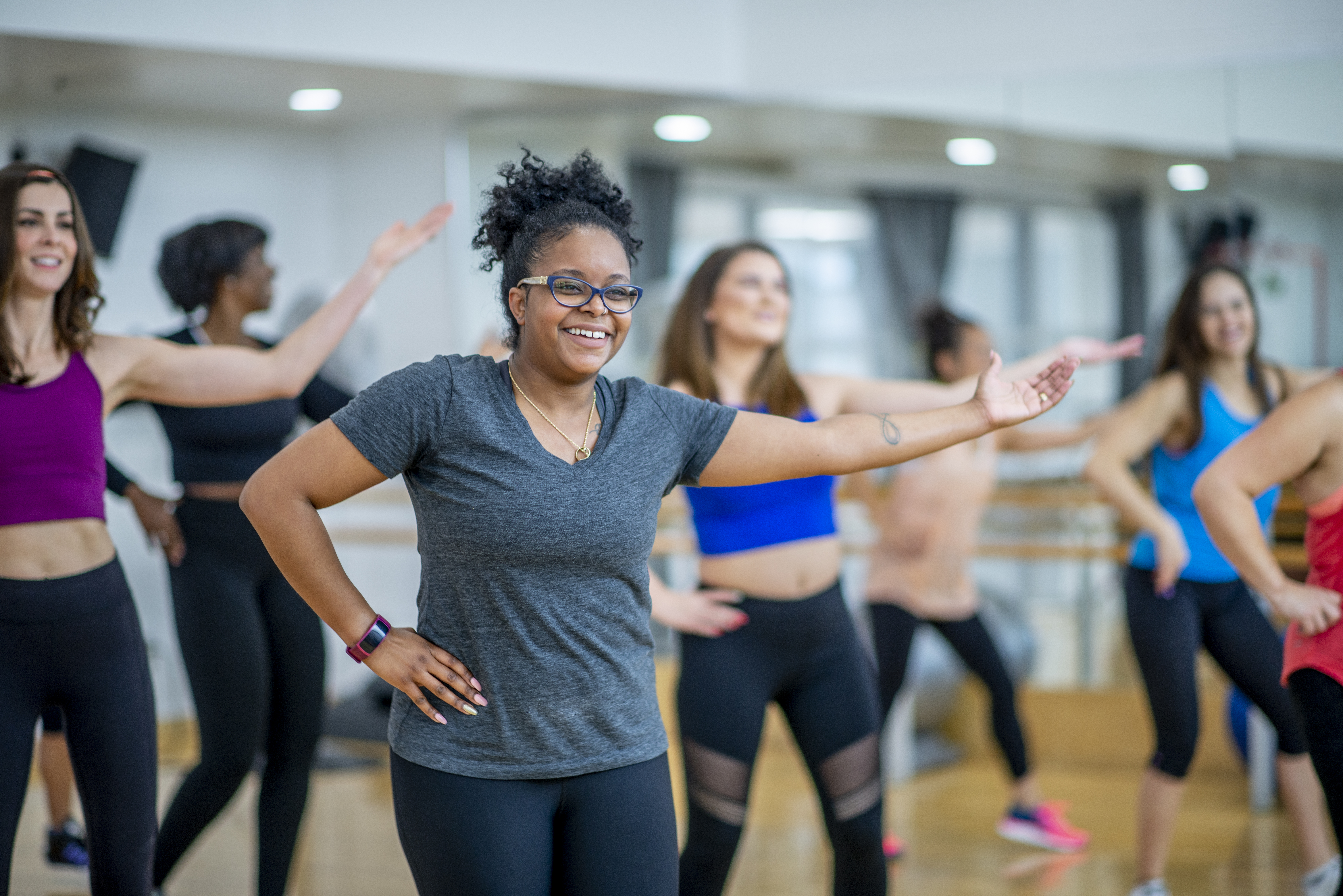Exercise
 According to the second edition of the Physical Activity Guidelines for Americans, “To attain the most health benefits from physical activity, adults need at least 150 to 300 minutes of moderate-intensity aerobic activity, like brisk walking or fast dancing, each week. Adults also need muscle-strengthening activity, like lifting weights or doing push-ups, at least 2 days each week.” While this is a general guide for adults, the updated guidelines also include a section, Key Guidelines for Adults with Chronic Health Conditions and Adults with Disabilities.
According to the second edition of the Physical Activity Guidelines for Americans, “To attain the most health benefits from physical activity, adults need at least 150 to 300 minutes of moderate-intensity aerobic activity, like brisk walking or fast dancing, each week. Adults also need muscle-strengthening activity, like lifting weights or doing push-ups, at least 2 days each week.” While this is a general guide for adults, the updated guidelines also include a section, Key Guidelines for Adults with Chronic Health Conditions and Adults with Disabilities.
Your HTC physical therapist can help you design an exercise program that will be the most helpful to you. Move Your Way has tips and tools from the U.S. Department of Health and Human Services to get you started.
Here are some more tips:
- It's a good idea to write down your plan. Tell how to do each exercise and the number of times to do it.
- Start with a few exercises that use different movements. At first, only do a few of each exercise and don't work out too long. Your muscles will be sore in the beginning. As your program becomes easier, slowly add more of each exercise. Exercise routines for people with Hemophilia sometimes start with exercises that engage the muscles without moving the joints, move to active exercises, and then add resistive exercises. Your program should include exercises that make you stronger, more flexible, and able to do things longer (endurance). You'll need to have special exercises for problem joints. Sports such as swimming and riding a bike are good because they repeat movements as well as build stamina. Weightlifting may be too stressful for your joints. Talk to your physical therapist and doctor before adding weights to your exercise routine.
- You will get the best results if you exercise at least three times a week (or as much as your physical therapist says).
- When you stop your exercise program for any reason, you may find it painful or even have a bleed if you start back at the same level. It's better to start back at a lower level and then work up to where you were before.
- Unless you are told not to by your doctor or physical therapist, you need to move your joints every day. This is especially important for joints that have been damaged. Bend, flex and stretch each joint through all its movements.
- Your physical therapist can help you judge the success of your program and make any needed changes. This is why routine check-ups are a must!
Exercising when you've had a bleed
It is not a good idea to exercise a muscle or joint if it is bleeding. You should exercise the other parts of your body while the joint or muscle is healing. Exercise of the part that bled should begin as soon as you can do it without pain. The longer you wait to begin, the more likely it is that the joint will be stiff or that the muscle will have shrunk. After a serious bleed, ask your doctor how long you should wait before starting your exercises again.
About weight-lifting
The physical therapist can give you advice about when it is helpful and safe to use weights. Children should not do heavy weightlifting because it can damage their immature bodies. However, doing repetitions with a light weight can be very good for a child. It builds the kind of muscles that protect joints the best.
Although it may seem more impressive to lift 100 pounds three times, it is really better for you to lift three pounds 100 times!
